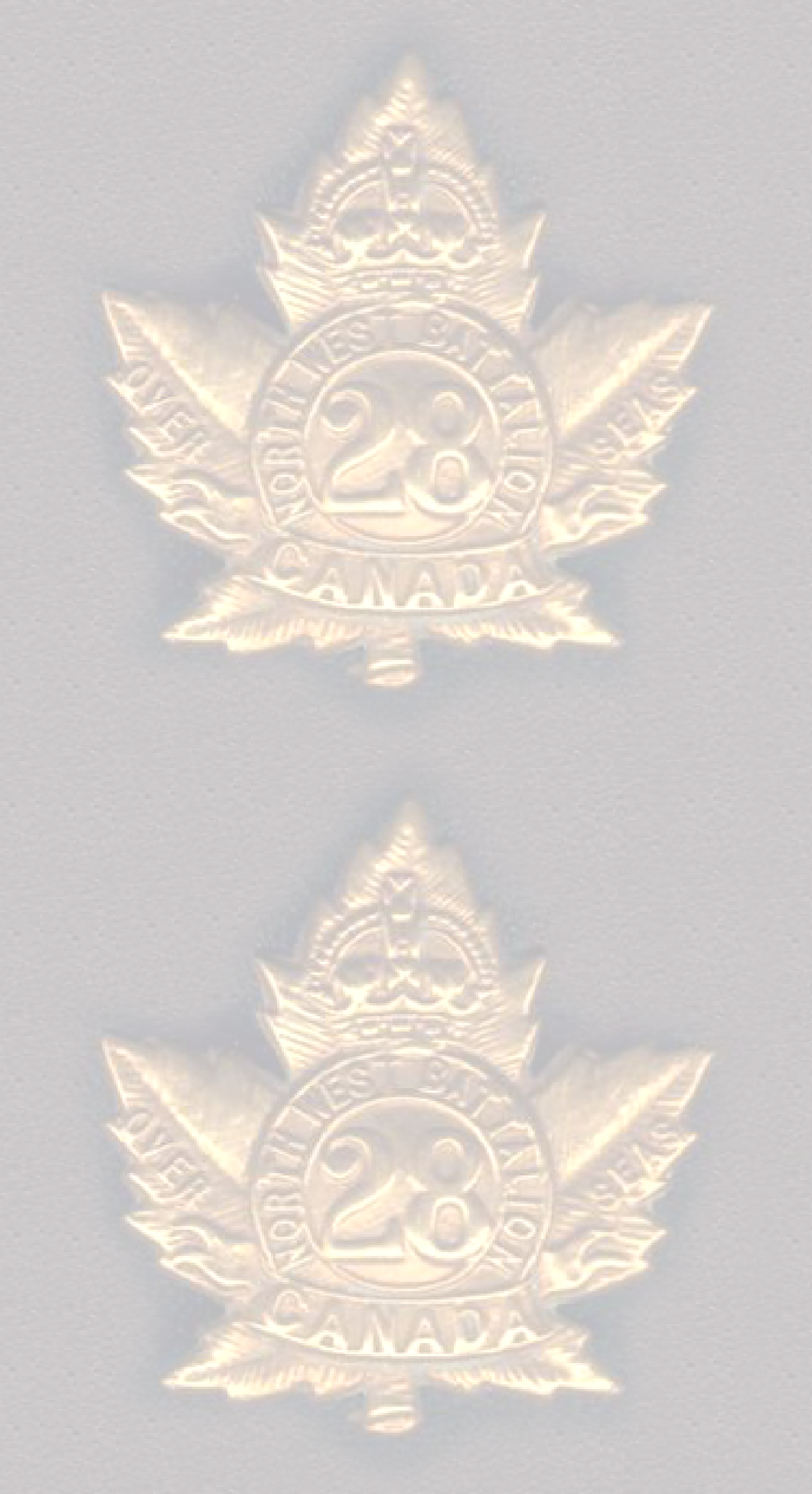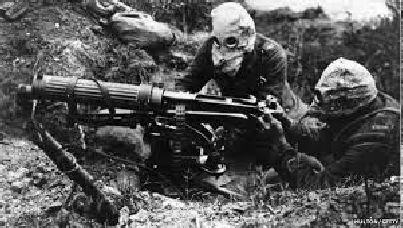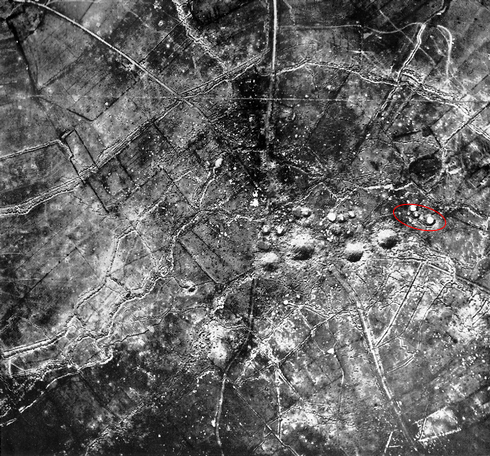
The War Diary of Lieutenant William L Hayes M C
1915—1919

1916 and the Battles for Ypres
St Eloi Craters
The war for the Canadians had now moved closer to the town of Ypres in Belgium.
South of the town of St Eloi the front line bulged southwards towards the German lines. This was called a salient—a projection of the fighting line into enemy territory. It is vulnerable as it is open to attack on three sides.
Mining as part of warfare was used extensively in the battle here. Army sappers dug tunnels under their own and the enemy front lines to plant explosives. The plan at St Eloi was for the British to push the front line forward and the Canadians to hold it. However the Canadians did not have time to prepare adequately. At 4.15 am on 27 March the British exploded six huge mines in no man’s land. The explosions could be heard in England. The largest of these was 95,600 pounds and was exploded by the 1st Canadian Tunnelling Company. The objective was then to rush the craters, hold them and so advance the Allied front line. But the ground, now damaged, was confused and the fighting fierce, communications nearly impossible and exhausting with men awake for 48 hours or more and officers 100 or more. The fighting was hand to hand in waist deep mud under sleet and rain. The British were relieved by the Canadians at 3 am on 4 April. There was no time to retrieve either wounded or dead making the battlefield a scene of horror. At 3.30 am on 6 April the Germans attacked and took back most of the ground lost to them at the start. There were further attacks and counter attacks, but after two weeks, the Germans had taken back all that they had lost at the beginning and 1,373 Canadians were dead or wounded. The Divisional Headquarters ordered the battle stopped. But the Germans continued to attack, using gas.
See also, The Underground War, Vimy Ridge to Arras, Robinson & Cave for good details on mining during the Great War.

Gas Hoods
http://www.bbc.co.uk/news/uk-



Craters 6 & 7
WLH: 13 Mar 16, attached (tmpy) to NCO School command, in the field at Zuytpeene , France
7 April NCO course concluded
Again WLH, attending NCO School, was not at St Eloi for the worst fighting, but returned on 7/8 April. The Battalion by this time was moving to Scottish Wood, near Hooge and into the trenches there.
NCO School: an NCO is a Non-
Most men will have been noted for certain qualities and 'been volunteered' for further training or promotion. A course at NCO School lasted about 3 weeks.
Gas Warfare. Poisoned gas was used by all armies in this war including the Canadians, although the first use was by the French Army in August 1914. All British and Canadian troops were issued with gas helmets early in the war. Later improvements led to gas respirators and masks for men and horses. All were difficult to use effectively.
Tear gas, chlorine gas, phosgene, mustard gas were all used with increasingly harmful effects.
Later, bromine, chloropicrin, nerve gas and combinations of all of these were used. Initially about 9% of injuries were as a result of gas and only 3 to 4% resulted in death. There were few deaths after May 1915 but gas alerts continued throughout the war.
Gas was difficult to use as it relied on wind and was impossible to control effectively. After the war, the use of gas was outlawed in warfare; a convention in force to the present day.
Soldiers were ordered not leave their posts in the face of gas in the same way that they would not leave in the face of any other offensive action.
http://www.firstworldwar.com/weaponry/gas.htm
28th Bn War Diary:
6 Apr Stand down
8 Apr Bn (apart from Coys in craters) moved back
losses 28th Bn, wounded I offr, OR killed 8, missing 12
10 Apr Bgd in rest, reorganisation prior to return to line
Shortage of helmets. Helmets of casualties to be salvaged and reissued. [Steel helmets first issued in March 1916]
18/19 relieve 26th Bn left section D Coy in trenches. Whole line shelled, front line and support trenches. 7.20 pm enemy launched attack on craters 6 & 7.
The April War Diaries of the 6th Infantry Brigade and the 2nd Canadian Division contain very good details of this battle.
Also
http://www.warmuseum.ca/firstworldwar/history/battles-
http://www.thecanadianencyclopedia.ca/en/article/battle-